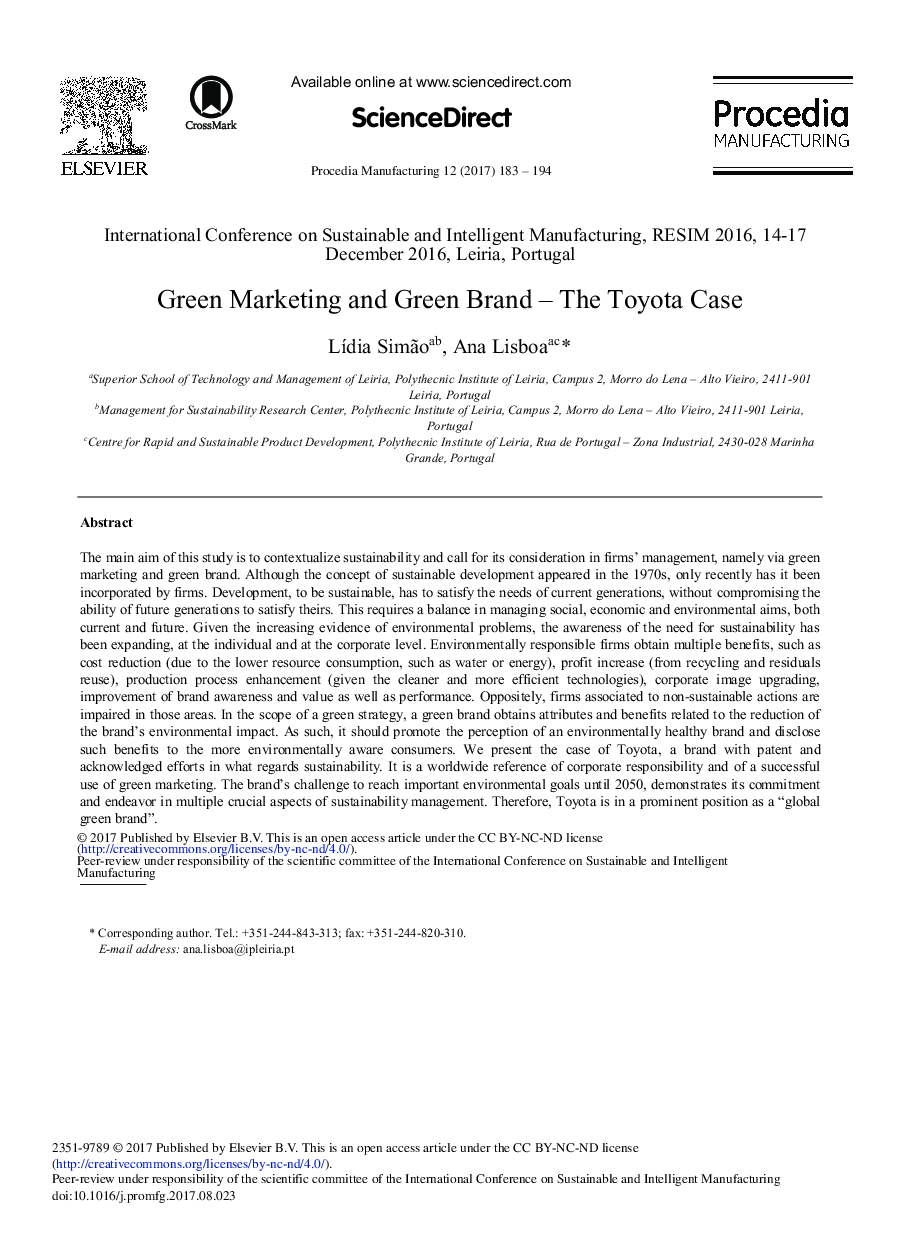| Article ID | Journal | Published Year | Pages | File Type |
|---|---|---|---|---|
| 5128626 | Procedia Manufacturing | 2017 | 12 Pages |
The main aim of this study is to contextualize sustainability and call for its consideration in firms' management, namely via green marketing and green brand. Although the concept of sustainable development appeared in the 1970s, only recently has it been incorporated by firms. Development, to be sustainable, has to satisfy the needs of current generations, without compromising the ability of future generations to satisfy theirs. This requires a balance in managing social, economic and environmental aims, both current and future. Given the increasing evidence of environmental problems, the awareness of the need for sustainability has been expanding, at the individual and at the corporate level. Environmentally responsible firms obtain multiple benefits, such as cost reduction (due to the lower resource consumption, such as water or energy), profit increase (from recycling and residuals reuse), production process enhancement (given the cleaner and more efficient technologies), corporate image upgrading, improvement of brand awareness and value as well as performance. Oppositely, firms associated to non-sustainable actions are impaired in those areas. In the scope of a green strategy, a green brand obtains attributes and benefits related to the reduction of the brand's environmental impact. As such, it should promote the perception of an environmentally healthy brand and disclose such benefits to the more environmentally aware consumers. We present the case of Toyota, a brand with patent and acknowledged efforts in what regards sustainability. It is a worldwide reference of corporate responsibility and of a successful use of green marketing. The brand's challenge to reach important environmental goals until 2050, demonstrates its commitment and endeavor in multiple crucial aspects of sustainability management. Therefore, Toyota is in a prominent position as a “global green brand”.
